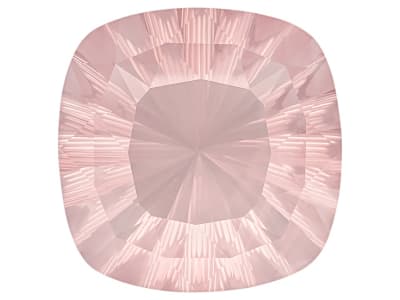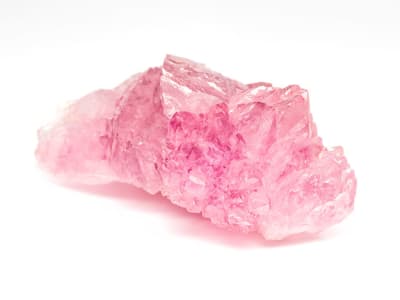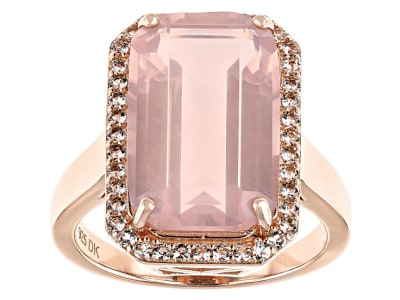Rose quartz is a semitransparent to translucent pink quartz. It is often found tumbled or fashioned into beads or cabochons for jewelry. It was once believed that the color was due to trace amounts of titanium, iron, or manganese in the material. New research has revealed that the color can be attributed to microscopic inclusions of a fibrous rose-colored mineral closely related to dumortierite.
General Information
Common Name
Rose Quartz
Species
Quartz
Transparency
Semitransparent - Translucent
Dispersion
Strength: None
Refractive Index
1.544-1.553
Birefringence
0.009
Optic Character
Uniaxial
Optic Sign
Positive
Polariscope Reaction
Aggregate (AGG), Doubly Refractive (DR)
Fluorescence
SWUV: Inert to weak purple
LWUV: Inert
LWUV: Inert
Pleochroism
Dichroic, unobservable or weak, varying shades of body color
Hardness
7
Streak
White
Specific Gravity
2.640-2.690 Range:0.03/-0.02 Typical:2.660
Toughness
Good
Inclusions
Rose quartz will often have fractures, liquid and two-phase inclusions and will often have a cloudy appearance.
Luster
Vitreous
Stability
Good
Fracture
Conchoidal, Uneven
Cleavage
None
Chemical Name
silicon dioxide (aka silica)
Chemical Formula
SiO2
Crystal System
Trigonal
Chemistry Classification
Silicate
Rose Quartz Colors
-
 Pink
Pink -
 Pink
Pink -
 Pink
Pink
Countries of Origin
Tanzania, United Republic Of; Mozambique; Cambodia; Unknown; China; Ireland; Brazil; South Africa; Madagascar; Nigeria
Care
Normal care unless dyed. If dyed avoid heat, temperature changes, steaming, chemicals, ultrasonic cleaners, and repolishing.


